Adrian Collins's Blog, page 145
February 17, 2022
REVIEW: Age of Ash by Daniel Abraham
Age of Ash is the latest novel from author Daniel Abraham. Abraham has been nominated for both World Fantasy and Nebula awards and is a Hugo Award winner. He has an impressive backlist of science fiction and fantasy writing including as one half of the writing team behind the bestselling The Expanse series. He also writes as M. L. N. Hanover. I would like to thank Orbit for sending me a copy of Age of Ash to review, it has been a brilliant introduction to Abraham’s writing.
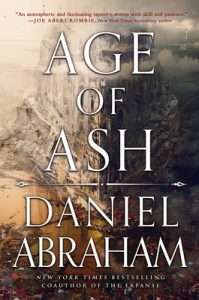 This is the first novel in Abraham’s new Kithamar Trilogy and is described as ‘a monumental epic fantasy’. Which is accurate, but as the action of Age of Ash takes place entirely within the city walls of the titular Kithamar it is not epic in a traditional traveling across a continent sort of way. Having said that, the city is vast with many districts described in vivid detail, each with their own particularities. Abraham’s prose is beautiful and the early chapters where he is building the city for the reader were a joy to read, almost like a printed version of the exploration phase of a vast computer game.
This is the first novel in Abraham’s new Kithamar Trilogy and is described as ‘a monumental epic fantasy’. Which is accurate, but as the action of Age of Ash takes place entirely within the city walls of the titular Kithamar it is not epic in a traditional traveling across a continent sort of way. Having said that, the city is vast with many districts described in vivid detail, each with their own particularities. Abraham’s prose is beautiful and the early chapters where he is building the city for the reader were a joy to read, almost like a printed version of the exploration phase of a vast computer game.
The protagonist of Age of Ash is Alys, a small time thief who lives in the slum area of the city, Longhill. After the murder of her brother Darro, Alys sets out to find out who killed him and why, and this journey of discovery is the main thread that we follow in the novel. There are other characters who play a part in this, the one of most note is Sammish. Originally a part of the same pick pocket crew as Alys, Sammish’s unrequited love for the main character is what draws her in to the conspiracies surrounding Darro’s death. Abraham’s characterisation of Alys and Sammish were probably my favourite parts of the novel. I may not always have liked their choices, but I understood the characters and really felt for them and what they went through. I also think that his portrayal of Alys’ grief and her mourning process was exceptionally well written, helping me to sympathise with her, especially when it is shown to impact her other relationships with characters like Sammish or Alys’ mother.
This is a great read if you enjoy a “slow burn” style of writing, and luxuriating in a delightfully written story that is character driven and utterly immersive. I liked it a lot, but I struggle to describe the plot and any events that I think are key action moments happen largely towards the end of the novel. As the first in a trilogy I think this will pay off in instalments two and three, but unfortunately I did find it a little too slow at times. Age of Ash is also not as gritty or dark as I expected it to be. Considering it takes place amongst the slums of a city, surrounded by crime, poverty, and violence, and one of the key plotlines is to uncover the cause of a brutal murder, I thought it would have a much darker feel. The power conspiracies and delicate magic of Kithamar are woven through the narrative but become more obvious in the last third of the novel with more time being spent with the antagonistic characters. However even they did not seem as villainous as I was expecting.
This is my first experience of reading Abraham’s work but I have been told that this methodical and steady style is typical. So if you are approaching Age of Ash armed with this knowledge and do not need a large cast of characters or numerous stand out moments of action in your fantasy fiction, I think you will thoroughly enjoy this first foray in to Kithamar. If you are looking for a more typical grimdark novel then this probably will not be one for you. For me, I am invested enough to want to return to the city and read the next part of the trilogy but I am hoping it moves at a slightly quicker pace in part two.
3.5/5
Read Age of Ash by Daniel Abraham
The post REVIEW: Age of Ash by Daniel Abraham appeared first on Grimdark Magazine.
February 16, 2022
REVIEW: The Rush 2 by Simon Spurrier
The second issue of The Rush, by Simon Spurrier, picks up hot on the heels right where the first left off. Our protagonist, Nettie, the haunted and beleaguered mother of a missing child, finds herself out in the frozen, white wastes of the far north in the ramshackle boomtown of Brokehoof, surrounded by violent, greedy madmen. While the first issue of The Rush gave us a fantastic opening tableau and introduced us to the world of its story and let us know right away what sinister flavor of supernatural was involved, the second issue focuses much more closely on the insidious nature of man himself. It’s other people you can’t trust. It’s other people that are truly dangerous. Within the pages of The Rush 2, it’s other people that will leave you broken and bleeding out in the snow over a wrong look—they’ll pull out shooting irons over gold. And here in The Rush 2 we find out that there is something else going on in the boomtown, something affecting those who have gone to the far north to find their fortunes. Something is twisting their minds and their perceptions, sending them off the deep end and setting the hook of paranoia under their skin.
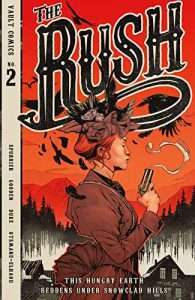 That’s not to say all the threats are purely terrestrial, as the supernatural always lurks around the corner, seen most prevalently in the way the inhabitants of the boomtown are unable to leave. Once they’ve staked a claim on the land, it’s as if something curls around their heart, settles in the whorls of their brains, drags them down to become a part of the blinding white landscape as they search desperately for any sign of something that glitters. Only those who don’t hunt for gold are free of this seduction, as evidenced by the local lawman, who is compelled by his oaths to stake no claims. And from the moment our protagonist awakens and arrives in the boomtown, she is plagued by seemingly prophetic dreams and visions. Visions that come unbidden, alarming and horrifying, but that leave her with the insistent feeling that her missing child is still alive…somewhere. Out in the snow. Out in the wastes. It puts Nettie, our protagonist, in a precarious situation and leaves the other inhabitants of Brokehoof more than a little wary of her and her mission.
That’s not to say all the threats are purely terrestrial, as the supernatural always lurks around the corner, seen most prevalently in the way the inhabitants of the boomtown are unable to leave. Once they’ve staked a claim on the land, it’s as if something curls around their heart, settles in the whorls of their brains, drags them down to become a part of the blinding white landscape as they search desperately for any sign of something that glitters. Only those who don’t hunt for gold are free of this seduction, as evidenced by the local lawman, who is compelled by his oaths to stake no claims. And from the moment our protagonist awakens and arrives in the boomtown, she is plagued by seemingly prophetic dreams and visions. Visions that come unbidden, alarming and horrifying, but that leave her with the insistent feeling that her missing child is still alive…somewhere. Out in the snow. Out in the wastes. It puts Nettie, our protagonist, in a precarious situation and leaves the other inhabitants of Brokehoof more than a little wary of her and her mission.
The art in The Rush 2 is just as brutal and lovely as it was in the first, with Nathan Gooden delivering the same kind of quality along with stellar colors and textures provided by Addison Duke. The art is especially fantastic in the shocking, explosive moments of violence the pop up during the issue as well as the absolutely gorgeous and horrifying moments when the supernatural does decide to rear its monstrous, hideous head. There is something truly, deeply wrong with Brokehoof and we are left with a stunning, gut-wrenching tableau on the final page that delivers a hell of a cliffhanger. All in all, The Rush 2 is just as engrossing and hair raising as the first, if anything setting the stage for an even bigger and more twisted story than I dared hope to imagine. I cannot wait to crack the cover on the third issue, and see what bloody madness the next installment of The Rush has in store. Like the first, I’m giving the second issue a strong four stars. This is not a series to be missed.
Read The Rush 2 by Simon Spurrier
The post REVIEW: The Rush 2 by Simon Spurrier appeared first on Grimdark Magazine.
February 15, 2022
REVIEW: Dead Things by Stephen Blackmoore
In Dead Things by Stephen Blackmoore, the lead protagonist Eric is truly a dark son-of-a-bitch.
 If Dead Things is anything to go on, I would have to guess the whole series has a noir urban fantasy vibe reminiscent of Felix Castor or John Constantine. There will be obvious comparisons to Harry Dresden from The Dresden Files, but Eric is cold and ruthless, whereas Dresden is snarky. Either way, Dead Things was a gritty urban fantasy done well.
If Dead Things is anything to go on, I would have to guess the whole series has a noir urban fantasy vibe reminiscent of Felix Castor or John Constantine. There will be obvious comparisons to Harry Dresden from The Dresden Files, but Eric is cold and ruthless, whereas Dresden is snarky. Either way, Dead Things was a gritty urban fantasy done well.
We start the story by being introduced to Eric after he is called home. His sister has been murdered, and Eric is home visiting old haunts. He is also looking for information, and the only way he can get it is by talking to the dead. Through ritual and blood, Eric speaks to the deceased. They are a swarming mass of life-sucking souls held at bay by Eric’s will and attitude alone. This story does not make the paranormal world look charming. There are no hugable and misunderstood souls here. Dead Things’ creatures want to tear you limb from limb and feast on the bloody bits that are left.
“Magic’s like Fight Club that way. You don’t talk about it. Can’t have the regular folk knowing this shit’s real. We might have to share.”
With the bits and pieces of information that Eric gets from the ghosts and the old friends and new enemies he meets up with along the way, Eric begins to pick apart why his sister got killed.
There is a ton of positives about this story. Firstly, Eric doesn’t have a swagger. Don’t get me wrong, I enjoy a good quip and a well-placed swagger, but it has gotten formulaic across urban fantasy. It seems like every new series I read is a clone of Harry Dresden. Not every series needs to be cheeky. Secondly, how necromancy is described hits home how dangerous and otherworldly it can be. This kind of power shouldn’t be taken lightly and isn’t in Dead Things. And while this is a fantasy novel, it does add a gritty realness to the story. I think fans who like their fantasy with a side of grimdark will appreciate this series.
“There’s a difference. Like I’m complex, you’re complicated.”
Eric is a violent person; he has no qualms about throwing down with humans or with the undead. There is a lot of violence and action scenes in the story, and they are done well. Blackmoore writes with a gritty scalpel, and he does not mince words.
Dead Things is a solid start to what looks like a dark and entertaining series for my grimdark-loving heart. I plowed through this book and can’t wait to get to the second book in the series, Broken Souls.
Read Dead Things by Stephen Blackmoore
The post REVIEW: Dead Things by Stephen Blackmoore appeared first on Grimdark Magazine.
February 14, 2022
REVIEW: Manhunt by Gretchen Felker-Martin
Think back on popular, post-apocalyptic horror novels. The viral outbreak of Captain Trips in Stephen King’s, The Stand. The environmental and human destruction left after nuclear warfare in Swan Song by Robert McCammon. The ambiguous but devastating world event causes humanity to unravel in Cormac McCarty’s The Road.
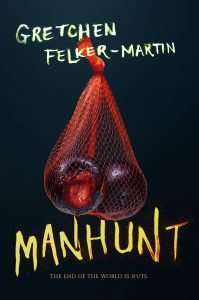 Very important markers of the genre; identifiably unique and remarkably special but very much told by the same voice.
Very important markers of the genre; identifiably unique and remarkably special but very much told by the same voice.
Manhunt by Gretchen Felker-Martin is a post-apocalyptic horror novel telling a new tale, from a new voice, in a familiar setting, for a spot on the shelf next to the classics.
Felker-Martin devises a plague that attacks humans with high levels of testosterone leaving the host in a ravaged physical state; reduced down to basic, primal instincts: Sex, Eat, Kill, Repeat. Humans not infected with the plague have splintered into various groups based on differing philosophies of survival. Adhering to post-apocalyptic blueprints, the reading experience is enjoyed through multiple POVs. The reader navigates a twisted new reality through varying perspectives following different main characters and their trusted allies.
Because of the nature of the plague, this story imagines new gender roles and sexual dynamics. All stereotypes based on sexuality and gender are smashed into oblivion and reformed in order to smash them again. Everything about this universe is fresh and exciting because the lens of the narrators through which we view the world is so new.
Felker-Martin gives everyone a voice and an experience. This does make the scope of Manhunt feel a bit daunting in size with its huge cast of characters to keep track of, but that’s something many readers come prepared to do for this genre given all the door-stopper, epic novels that have come before.
The most difficult thing about investing in the characters of Manhunt is all the fucking emotional wreckage. These are not two-dimensional, cardboard cutouts of fictional people running around playing apocalyptic warfare, these are complex, flesh and blood individuals with strong, dynamic character traits, big personalities, and raw emotions. They run full-on into one another with all their psychological trauma and form these complicated relationships based on attraction, survival, and need. It is unabashedly queer, explicit, greasy, violent, and sensual. *flailing hands and gesturing* all of these things, all at the same time.
It’s tough to go through some of the things these characters end up doing to one another but there are some shining moments of feel-good hope and humanity, softened by humor; sprinkled with sarcasm. It’s a lot of fun and it’s also very dark.
Gretchen Felker-Martin clearly has a lot to say. There seems to be a countless cast of colorful characters just waiting to make their mark on our horror-fiction-loving hearts with more strange and wonderful stories to tell.
This is a debut that literally throws open the door and announces its arrival by making sure the room knows its intentions to stay. Manhunt is what the future of this genre looks like. Take note.
Read Manhunt by Gretchen Felker-Martin
The post REVIEW: Manhunt by Gretchen Felker-Martin appeared first on Grimdark Magazine.
February 13, 2022
REVIEW: And Then I Woke Up by Malcolm Devlin
Malcolm Devlin’s novella, And Then I Woke Up, explores the concept of the truth and the way its many versions influence choice and action. The story’s narrator speaks directly to the reader, helping them adjust to prior events and the new world order. At every turn, you will be left wondering: how much of this is real?
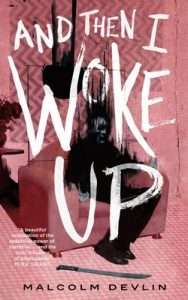 And Then I Woke Up takes place in a not-so-distant future where an atypical illness leaves monsters in its wake. Survivors arm themselves and seek refuge in groups. Fearing for their lives, boundaries are crossed, and lines begin to blur. Spence is one such individual. “Cured” and living at the Ironside rehabilitation facility, all he wants now is redemption, and he might just find it through a new inmate’s search for her own truth. However, not all may be what it seems. When a disease compromises your ability to define reality, differentiating fact from fiction becomes infinitely harder and trust, almost impossible.
And Then I Woke Up takes place in a not-so-distant future where an atypical illness leaves monsters in its wake. Survivors arm themselves and seek refuge in groups. Fearing for their lives, boundaries are crossed, and lines begin to blur. Spence is one such individual. “Cured” and living at the Ironside rehabilitation facility, all he wants now is redemption, and he might just find it through a new inmate’s search for her own truth. However, not all may be what it seems. When a disease compromises your ability to define reality, differentiating fact from fiction becomes infinitely harder and trust, almost impossible.
Some books are better experienced going in blind; And Then I Woke Up is one of them. Part of the allure of Devlin’s narrative is the way he twists the perception of reality through Spence’s explanation to the reader. The timeline is not always linear and explores other versions of what happened, complicating and simplifying the story elements all at once. Just when you think you understand the sequence of events, Devlin challenges that idea, introducing new variables for you to consider. This unique narrative structure and direct reference to the reader pairs with Spence’s strong voice to completely immerse you in what’s happening, clearly painting vivid imagery of a world attempting to recover itself.
Grimdark fans will appreciate And Then I Woke Up for the internal struggles the characters experience, the unreliability of the narrative, and the way Devlin constructs a hazy maze where the truth lays hidden. The novella also explores the trauma associated with the consequences of one’s actions and how powerful the framing of the narrative can be both from an individual perspective as well as a societal one: “Macey once told me the problem with the truth was that it was so poorly written. Given the choice, the pleasantly told lie is always more seductive.” Devlin leaves you to draw your own conclusions, especially in regards to what is true.
Thank you to Tordotcom for sending me an ARC of And Then I Woke Up to review.
Read And Then I Woke Up by Malcolm Devlin
The post REVIEW: And Then I Woke Up by Malcolm Devlin appeared first on Grimdark Magazine.
February 12, 2022
REVIEW: Dreams of the Dying by Nicolas Lietzau
Dreams of the Dying is the first novel from Nicolas Lietzau and it is a whirlwind of nightmares, death and desperation. The book tackles some difficult themes, bring us the grey morality that is a hallmark of grimdark, and offers the tiniest sliver of hope at redemption. This is a fantasy that delves into the dark recesses of your mind and takes root.
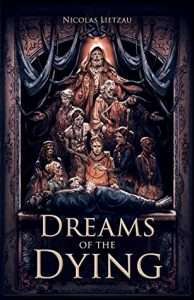 It is set in the world of Enderal, which some of you may recognise as being the same title of the award-winning indie videogame, built initially as a mod for Skyrim. Don’t worry if you haven’t played the game though, as it’s not required to enjoy Dreams of the Dying. If you have, Lietzau has included a helpful note at the start of the book to help you situate the novel within the wider world. Regardless of Enderal’s history before the start of the novel, this is a story that takes an interesting journey to explore the darkness inside and around us. The effects of classism, racism and colonialism on people are all examined from the very early pages of the book and form the foundation for future events. In Dreams of the Dying, we follow Jespar Dal’Varek as he responds to an invitation for a job that promises a big payout from a mysterious patron. Jespar is a drifting sellsword who has been living a nomadic life for the last three years and who is plagued by nightmares. Lucky (or unluckily) for him, nightmares play a large part in this next job.
It is set in the world of Enderal, which some of you may recognise as being the same title of the award-winning indie videogame, built initially as a mod for Skyrim. Don’t worry if you haven’t played the game though, as it’s not required to enjoy Dreams of the Dying. If you have, Lietzau has included a helpful note at the start of the book to help you situate the novel within the wider world. Regardless of Enderal’s history before the start of the novel, this is a story that takes an interesting journey to explore the darkness inside and around us. The effects of classism, racism and colonialism on people are all examined from the very early pages of the book and form the foundation for future events. In Dreams of the Dying, we follow Jespar Dal’Varek as he responds to an invitation for a job that promises a big payout from a mysterious patron. Jespar is a drifting sellsword who has been living a nomadic life for the last three years and who is plagued by nightmares. Lucky (or unluckily) for him, nightmares play a large part in this next job.
Meeting his benefactor, Jespar is tasked with saving the richest man in the world, Jarroa Oonai, from an unexplained and sudden coma before the entire country tears itself apart. Partnering up with Lysia Varroy, the two seek out a dreamwalker to venture into the dreams of their patient to look for clues to his predicament. As they travel, they see firsthand the living tragedy many of the countries’ “have-nots” are forced to endure at the hands of their rich rulers. The majority of those suffering are the islands’ native people, the Makehu, who seem to be modelled on both Māori and Pacific Islanders. The societal tensions spill into the central story as violence is being encouraged and escalated by a paramilitary group called the Scythes, intent on stirring up a bloody revolution.
Once Jespar and Lysia have found their dreamwalker, Kawu, the story really begins to take off. Diving into the dreams of Oonai, Jespar finds the man trapped in a nightmare hellscape of his own fears and darkness. The journey into Oonai’s mind sets Jespar’s own nightmares into overdrive and adds a few haunting images for good measure. As they continue their quest to save a man who is rapidly becoming public enemy number one, Dream of the Dying also explores feelings of companionship, love and belonging alongside the darker themes of isolation, mental illness, and suicide with which both Oonai and Jespar struggle. As our trio struggle to complete their task, the building tension between the classes spills over into violence that engulfs everything. Without delving too much further into the plot, there is a lot here for fans of darker tales to appreciate and this is well worth the effort for a pretty chunky tome. The cover art really sets the mood with many of the characters decomposing as they reach out towards Jespar who remains, seemingly, whole, and the hardback edition comes with a lot of extras in the back if you need any more encouragement.
Where Dreams of the Dying can fall down is in the language: some phrasing feels anachronistic and syntax occasionally feels a little awkward. I attribute this Lietzau’s prose not being written in his first language and the unexpected text can be forgiven. The cast of characters is diverse and their personalities complex: you’re not necessarily going to fall in love with Jespar but you’ll be rooting for him nonetheless. There are a couple of times where conversations resembled something of an info-dump when bringing the reader up to speed on the magic system, though this wasn’t extensive and served its purpose.
Overall, Dreams of the Dying is an excellent exploration into the horrors the mind can conjure up when faced with desperate circumstances in the waking world. Lietzau has tackled some tough topics in a compelling and balanced way with a story that has damaged characters front and foremost. Although the politics and philosophising may not be to everyone’s tastes, I found this to be an excellent and thought-provoking read while ticking all the boxes for a great dark fantasy. Dreams of the Dying is a superb journey into the darkness within.
4 Stars
Read Dreams of the Dying by Nicolas Lietzau
The post REVIEW: Dreams of the Dying by Nicolas Lietzau appeared first on Grimdark Magazine.
February 11, 2022
REVIEW: The Weeping Sigil by Jordan Loyal Short
The Weeping Sigil by Jordan Loyal Short is the sequel to The Skald’s Black Verse. We here at Grimdark Magazine reviewed the first book in the series and thought it was one of the more enjoyable grimdark books of the past five years. I made a comparison to Warhammer 40K but with more adult politics as well as relationships.
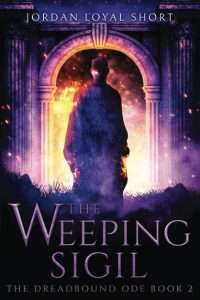 The premise is in the distant future, mankind has managed to explore the stars but degraded socially. The Federation rules over all of mankind but most worlds are barely above Medieval technology with an oppressive Inquisition enforcing an ancestor-worshiping cult. The planet Norn was a Viking-themed place, caught between the locals and occupying legions, when it was destroyed by the sudden destruction of their moon via comet.
The premise is in the distant future, mankind has managed to explore the stars but degraded socially. The Federation rules over all of mankind but most worlds are barely above Medieval technology with an oppressive Inquisition enforcing an ancestor-worshiping cult. The planet Norn was a Viking-themed place, caught between the locals and occupying legions, when it was destroyed by the sudden destruction of their moon via comet.
With their home planet destroyed, the survivors are trapped on a Federation ship they hijacked and soon fall prey to pirates who intend to sell the entire crew into slavery. One or two of them might be recruited as members of the crew but that would require them leaving the others to be sold as chattle. Henrik, the binder, escaped on his own but ends up in the exact same situation as he’s sold to a powerful family that promptly brands him as a well-cared for house slave. He’s treated as a useful advisor but his life depends entirely on their political fortunes as well as favor.
Jordan Loyal Short has created an evocative and fascinating dark space opera universe that is familiar enough to readers that it doesn’t come off as wholly alien but is repellent in many of its familarities. Tyria is a planet that resembles Ancient Rome with all of its slavery, politicking, hypocritical performative religion, and backstabbing. It is a terrible place for Henrik to find himself and yet a place that he can thrive due to the fact he has no allegiances as well as a cunning savage mind.
Part of what I like about the depiction is the sheer horror of slavery as an institution. Rather than handled generically, we get a full exposure to how it breaks you down mentally as well as physically. The sheer constant paranoia you need to possess about offending the people with power of life and death over you is one of the book’s most effective features. It manages to properly earn the title grimdark without ever having to get into the specifics of assault or torture.
The twists and turns in the book are exceptionally well-written and I had a blast reading the book from beginning to end. It is dark, terrifying, and yet intriguing. This is a world you would never want to live in but perhaps would enjoy visiting for a time with our antiheroes. No one is good and quite a few are evil but everyone has been shaped by Federation society. I’m anxious to read the next book in the series.
Read The Weeping Sigil by Jordan Loyal Short
The post REVIEW: The Weeping Sigil by Jordan Loyal Short appeared first on Grimdark Magazine.
February 10, 2022
REVIEW: The Nothing Within by Andy Giesler
The Nothing Within is a book that utterly oozes voice. It’s the debut novel of Andy Giesler, and I was lucky to get a chance to read it as part of my role as a judge in the Self-Published Science Fiction Contest. The book did not make the semi-finals, but it was one of my personal top three picks from the contest.
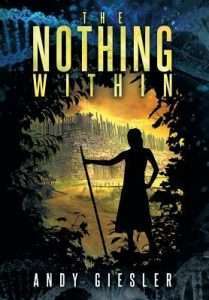 The Nothing Within is a rural, pastoral post-apocalyptic story. Imagine Horizon Zero Dawn with Amish people and no giant robot animals and you’re halfway there.
The Nothing Within is a rural, pastoral post-apocalyptic story. Imagine Horizon Zero Dawn with Amish people and no giant robot animals and you’re halfway there.
It reads unlike any other story I’ve read before, with an excellent voice from the beginning to end that never wavers or feels fake. Giesler keeps up a folksy slang throughout. There are fables called Good-old Tales, and an old diary called Words from the Reckoning that takes place during the apocalypse, in addition to the main story, and all have their own idiosyncrasies and styles.
Many birds, but no idea how many
Lord protect us
Nearly two weeks since I wrote last. Will try to keep at it. Seems more important now.
A little warmer, though haze dims the sun.
Word is that everything modern stopped working, everywhere at the same time.
There’s been looting, burning and killing in Sugarcreek, Berlin, Millersburg, and New Philly. I’d visit the neighbours for news but Eli won’t hear of it. Said the children and I should stay put. He’s been visiting for us. Tells us what he hears. Parts of it anyhow.
Even though Elijah Lapp’s Amish, he had a naughtwork grown into him for work, so he could talk with the saws and drills and lathes. Had to, or he’d lose his job. Two weeks ago, same day as the wall of smoke, his naughts shut down. No warning. Left him feeling poorly a few hours. He says others from work were the same. Like the whole world went quiet at once.
The other sections are Old Root telling her story to an audience. This is the main storyline of the novel, but all of them tie together as the book goes on.
The premise of The Nothing Within is that technology ran amok and destroyed civilization, but the groups of people best able to survive and adapt from that are the groups that have resisted technology as much as possible—Mennonites, Hutterites, and Amish people. Their agrarian lifestyle is definitely altered and adjusted by the rest of the world collapsing, but their lack of dependency on technology has kept them able to keep going. Honestly, this premise is so simple it’s amazing that no one to my knowledge has done it before.
Many of the chapters in this book are extremely short, and the way the story switches between its Good Old Tales, its diary, and Old Root’s story can make it feel disjointed and fragmented. That makes sense, in that if we’re dealing with a post-apocalyptic setting, we’re dealing with the loss of knowledge, and piecing together fragments feels true to the setting in a way that a more traditional story arc would not.
The characters are all solid and well-developed, with a naturalistic sense to all of them and their relationships with one another. The tension and relief of community living is consistent throughout, as characters navigate their relationships, which are extremely important in such a tight-knit community.
The Nothing Within takes its time in getting you to the plot, but the mysteries of the setting and the fragmented narrative kept me interested throughout regardless. The voice is consistently compelling. If you’re looking for a unique post-apocalyptic tale, I definitely recommend this one.
Read The Nothing Within by Andy Giesler
The post REVIEW: The Nothing Within by Andy Giesler appeared first on Grimdark Magazine.
February 9, 2022
REVIEW: Bluebird by Ciel Pierlot
Bluebird by Ciel Pierlot is an incredibly fun queer science fiction adventure captivating readers from the first to the last page. How could it be any different with a tagline like “Lesbian Gunslingers in Space”? Evoking the phenomenal Gideon the Ninth, famously marketed as “Lesbian Necromancers in Space”, Bluebird might charm readers similarly. I don’t expect it to be quite the same breakout success but I can see this being a popular and beloved genre contribution. It is full of dry humour and the sort of sparse wit that made me chuckle throughout reading the book and felt absolutely natural for this set of characters.
 The story follows Rig as she embarks on a journey across the galaxy to save her estranged sister from her former faction – who are trying to blackmail her into returning what she stole from them. But as is par for the course, she is not alone on this mission as she joins the crew of the Bluebird, a ship full of resistance fighters, and has the help of her badass librarian girlfriend June. Despite having noped out of the power struggles between the three factions vying for dominance in this world, Rig is drawn back into them as she and her friends fight their way through space.
The story follows Rig as she embarks on a journey across the galaxy to save her estranged sister from her former faction – who are trying to blackmail her into returning what she stole from them. But as is par for the course, she is not alone on this mission as she joins the crew of the Bluebird, a ship full of resistance fighters, and has the help of her badass librarian girlfriend June. Despite having noped out of the power struggles between the three factions vying for dominance in this world, Rig is drawn back into them as she and her friends fight their way through space.
Bluebird is fast-paced and compelling, the kind of book you’ll want to keep reading and reading because it absorbs you so much and you want to know how Rig’s story continues. I personally keep thinking I’m not a huge fan of science fiction, and then I pick up a book like this one, and I want to immediately read the whole genre because it’s exactly my cup of tea. Strong characters, a compelling story, high stakes and humour that just clicks for me. It is dark and gritty without being overly misantrophic, and never loses a hopeful spark to keep the characters motivated.
I think this is an outstanding science fiction title, and one I’d personally consider for awards. I look forward to reading more of Ciel Pierlot’s work – if her debut is this good, hopes are high for future books. And I definitely need to keep reading queer science fiction, because apparently I have been wrongly assuming that I’m not a science fiction person. I’d especially recommend Bluebird to readers of fellow Angry Robot title The Outside by Ada Hoffman or Charlie Jane Anders’ Victory Greater Than Death, or perhaps even Tade Thompson’s Far From the Light of Heaven.
Read Bluebird by Ciel Pierlot
The post REVIEW: Bluebird by Ciel Pierlot appeared first on Grimdark Magazine.
February 8, 2022
REVIEW: The Darkness That Comes Before by R. Scott Bakker
R. Scott Bakker’s The Darkness That Comes Before has a divisive effect: readers who love it, laud it with endless praise, but those who despise it, vocalize their criticisms ardently. I was keen to see what my own experience would bring.
[image error]The first book in The Prince of Nothing Trilogy, The Darkness That Comes Before, lays the groundwork for a world remade by an apocalyptic event. Bakker weaves together a mysterious history from two thousand years before with an uncertain present as thousands gather in pursuit of a holy war. At the story’s center lies an unknown traveler whose connections and influences shape the world and people around him. As the struggle for control over the crusade heightens, history reveals itself in the usual way: through its survivors.
The world of The Darkness That Comes Before is equally bleak for everyone: something Bakker makes abundantly clear throughout the narrative. The grim setting lends itself as more than just a backdrop. It impacts the way Bakker intwines significant themes with his character arcs, especially with regard to internal and external identity. In parallel with strong philosophical threads, each character experiences a certain moment that separates the person they were before the event from the person they are afterward. This internal collision of identities bleeds into an external struggle as they begin to question how their changed selves fit into their society. While you might not agree with their choices, the path these characters walk not only makes sense for their arcs, but also for the world in which they dwell.
Aside from these transformative moments, Bakker displays ones of autonomy, specifically for his female characters. Though they may be quieter or come about in more unexpected ways in comparison to those for their male counterparts, these instances naturally fit into the overarching story Bakker’s telling. These events act as evidence that these characters could have more agency as the series continues.
Though The Darkness That Comes Before is told from multiple points of view, Bakker is purposeful and clever in the way he makes introductions. Each main POV serves the plot, continuously pushing the narrative forward while slowly grounding the reader in their unique perspective and the world. He masterfully blends history, lore, philosophy, and religion into a disturbingly beautiful culmination unique to the fantasy genre.
Lodged under the grimdark label, The Darkness That Comes Before is not for the faint of heart. Bakker’s setup warns this is only the beginning of a full descent into darkness. His exploration of choice and the fallout from those decisions adds a relevant and meaningful layer into his intentions with the novel: “It’s the concert of knowledge and ignorance that underwrites our decisions” (73). I’m very much looking forward to what comes next.
Read The Darkness That Comes Before by R. Scott Bakker
The post REVIEW: The Darkness That Comes Before by R. Scott Bakker appeared first on Grimdark Magazine.



